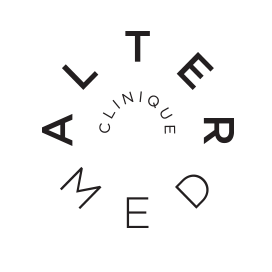
WHY WORK AND TREAT YOUR RESPIRATORY MUSCLES?
If you have ever seen a health care professional, especially an orthotherapist or osteopath, chances are they have talked to you about your respiratory muscles, even if your reason for seeing them did not include them.
I understand that it can be frustrating to receive treatment that is not what you asked for if it is not justified by the therapist. This article may help you understand if your therapist failed to explain the importance of treating the respiratory muscles. Before diving into the subject, I suggest you read my article on respiratory muscles to find out which part of your anatomy is involved.
Respiratory muscles and stress
Before talking about benefits, there is a certain logic to follow to understand the role of our respiratory muscles. I dedicate this logic to the person who first introduced it to me, Martin Boisjoly, mentor in orthotherapy and president of the Centre de recherche sur les applications thérapeutiques du toucher. (CRATT).
The first step in reasoning is to understand that the respiratory muscles and the postural muscles of the spine (abdomen, thorax and neck) are actually the same. Both are muscles attached to the spine or ribs, which are deep, with reasonably small muscle bellies and composed mostly of type 1 (slow twitch) muscle fibers. This influences posture and therefore breathing, and vice versa.
For the second step of our reasoning, please imagine someone who is surprised or scared. What reaction do you imagine? Whether it's a scream or just a sudden deep breath, chances are that the reaction involved immediate recruitment of the respiratory muscles.
This is a way of popularizing that stressful situations like fear and surprise have a profound effect on our respiratory muscles. The reason for this association can be traced back to our survival instincts, which had to activate our respiratory system to give us the energy to fight or flee stressful situations. So we can see that stress affects our respiratory muscles.
For the third step, we need to understand how the body supports itself. Bones are the attachment points of every structure in the human body, but they are not organized and oriented by themselves. It is the postural muscles, along with the ligaments, that allow the bones to form a large, solid structure. Without them, the bones would collapse. In turn, the larger superficial muscles of movement, our pectoralis major, deltoids and trapezius, can hold on to them and create the movements that our daily lives demand. A change to the postural muscles will alter the foundation that the movement muscles use to operate and therefore alter their mechanics.
In summary, stress affects the respiratory muscles, which are also the postural muscles. The effect on these muscles then translates into an effect on the superficial muscles. Thus, stress can affect muscles that, at first glance, seem to have nothing to do with pain. Since we can't go to the stressful situations that are already in the past (the source of the problem), the respiratory muscles are the most upstream target that the manual therapist can treat to relieve your symptoms. Furthermore, by ensuring that your respiratory muscles are in optimal health, you are better prepared to deal with future stressful situations.
So the logical pathway is complete, but I want to point out other parallel benefits of treating your respiratory muscles. When your respiratory muscles are deemed to be in need of intervention, it is because they are too contracted, their tone is too high. A contracted muscle is less contractile, meaning it has less ability to contract, and offers more resistance to being stretched. When we apply this to the muscles of respiration, it means that your inspiratory muscles inspire less and offer more resistance when you exhale. The opposite is true for the muscles of expiration. The result of a contracted respiratory musculature is a deficient and demanding breath. By loosening the contractures, respiratory movement becomes easier and breathing capacity is improved. Therefore, healthier respiratory muscles allow for better cardiovascular performance.
Respiratory muscles and posture
Secondly, I would like to go back to the passage that explained that postural muscles orient the bones. This is true for the vertebrae as well as for the rest of the bones.
Knowing that the nerves of the entire body below the head emerge between a pair of vertebrae, it is not difficult to see the possibility that a postural muscle brings two vertebrae together and creates a pinch. This pinch can be felt all along its path and in all the structures it innervates, whether it is a muscle, an organ or something else.
Certain problems can therefore be caused by a postural contracture, even if the link seems tenuous.
Finally, in the same logic of consistent bone structure of postural muscles, let's talk about axes of work. Each of your movement muscles has been shaped over thousands of years of evolution to work under certain conditions. One of these conditions is the working axis, or the direction of movement given the bony landmarks and gravitational force.
By changing this axis of work, the action of the muscle is hindered and friction can be created with the surrounding tissues (e.g. a tendon that rubs against a bone). This friction is often the cause of certain wear and tear injuries such as tendonitis. We can therefore avoid these injuries by having healthy postural muscles and therefore a straight frame.
In conclusion, there are many benefits to knowing about the respiratory muscles and their treatment. Whether it is to reduce the effects of stress on the body, to allow for better cardiovascular performance or to prevent nerve pinches and wear and tear injuries, everyone can benefit. So the next time a therapist suggests treating your respiratory muscles, you can relax and know that you are in good hands.
Izaak Lavarenne, NDG Physiotherapist


